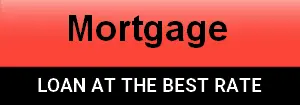What is equity when buying property in Switzerland?

Investing in real estate in Switzerland is an exciting project but involves crucial financial considerations, notably the amount of equity required. Equity for real estate purchase in Switzerland, which represents the portion of the property’s purchase price you finance without mortgage borrowing, plays a fundamental role in the viability of your real estate project. How much equity to buy a house in Switzerland, what types of equity are possible, or what LPP buyback is, are questions you will find answers to here.
Importance of equity for real estate purchase in Switzerland
Role of equity in mortgage financing
Equity for real estate purchase in Switzerland is a key element of real estate financing. It demonstrates your ability to invest and manage financial risks. In Switzerland, banks and financial institutions generally require buyers to provide a minimum of 20% of the purchase price in equity. This reduces the risk taken by the lending institution, as a substantial initial contribution sends a positive signal about your creditworthiness.
Furthermore, a higher contribution can lead to more favorable interest rates, as the lender perceives a reduced risk. In summary, a good level of equity can significantly influence the terms of your mortgage loan, allowing you to save on borrowing costs in the long term.
Impact on loan amount
The amount of equity for real estate purchase in Switzerland that you can mobilize directly affects the total amount you can borrow. For example, if you plan to buy a house for CHF 800,000 with a 20% contribution, this means you will need CHF 160,000 in equity. This leaves CHF 640,000 to be financed by a mortgage loan. If you do not have this amount, you will have to either postpone your purchase project or consider less expensive options.
Banks also assess your repayment capacity by considering your equity. The higher your contribution, the less debt you will have, placing you in an advantageous position to obtain a loan. Consequently, it is essential to carefully calculate the amount of equity you have before starting your property search.
Types of equity
To obtain a mortgage loan, equity for real estate purchase in Switzerland is an essential component. It represents the personal contribution you must provide to finance part of your property. Here is a description of the different types of equity, as well as the minimum and maximum amounts usually accepted for each.
Cash
Cash or liquid assets are the most traditional and simplest equity to use for real estate purchase. This amount can come from your personal savings, the sale of an asset, or other sources of liquidity. In Switzerland, having available cash is a major asset when negotiating a real estate purchase.

Savings
Savings accounts are often an important source of equity. Many investors start saving from a young age to build up a sufficient amount for their future real estate purchase. Interest rates on these accounts may vary, but they always represent a secure way to grow your capital.
Family donation
Receiving a family donation can also constitute a form of equity. In Switzerland, it is common for parents or grandparents to help young buyers enter the real estate market. This can take the form of money, but also assets that can be liquidated.
Advance on inheritance
An advance on inheritance is a term used to describe an early receipt of part of your inheritance to finance your real estate purchase. This mechanism can be a viable solution for those wishing to acquire property, but it must be planned carefully to avoid family conflicts.
2nd pillar – LPP
The 2nd pillar, or occupational pension, or LPP, allows employees to build savings for retirement. However, in Switzerland, it is also possible to use part of this savings to finance the purchase of a home by increasing your equity for real estate purchase in Switzerland. This represents an interesting alternative for those who have contributed and accumulated substantial capital in their 2nd pillar. The LPP, or Occupational Pension Act, is specific to Switzerland and allows access to your pension funds for the purchase of real estate. Users must ensure they understand the impact of this decision on their future retirement.
Regarding the LPP buyback in the context of a mortgage loan, please read the following section.
Minimum amount: Withdrawals are only possible in increments of CHF 20,000.
Maximum amount: You can generally withdraw all available amounts in your 2nd pillar, provided the use is for a primary residence.
3rd pillar
The 3rd pillar, also known as individual pension provision (life insurance: see below), offers an alternative way to build equity. Compared to the first two pillars, the 3rd pillar is optional and offers more flexibility. It is also possible to use accumulated funds for a real estate project, making this option attractive for young investors.
Life insurance
Life insurance contracts (3rd pillar: see above) can also serve as equity. Some life insurance policies have a surrender value that you can use to finance the purchase of a property. This is an option to consider if you want to diversify your sources of equity.
Pledge
A pledge is a technique that allows you to use an asset you own as collateral to obtain liquidity. This can include real estate or other assets. This form of equity for real estate purchase in Switzerland can be particularly useful for those who want to raise funds quickly without selling their assets.
Finally, a life insurance policy can be pledged to obtain a loan. This allows investors to use their insurance value as collateral to acquire equity. This requires careful planning to ensure that the loan terms are favorable.
LPP Buyback
The LPP buyback (occupational pension or 2nd pillar) to finance a real estate purchase in Switzerland is a process governed by strict rules. This process allows you to use part or all of the funds accumulated in your pension fund to constitute the equity for real estate purchase in Switzerland for your primary residence.
Here is a detailed description of the process:
1. Prerequisites for the LPP buyback
a) Strictly limited use for the primary residence
- The LPP buyback can only be used to acquire or renovate a primary residence, that is, the place where you live or will live. It cannot be used for rental or secondary properties, nor for the purchase of land without immediate construction.
b) Age limit
- You must be under 50 years old to withdraw up to 100% of your 2nd pillar assets.
- If you are over 50, you can only withdraw the higher amount between the assets accumulated at age 50 or half of the current assets in the LPP.
c) Individual owner or co-owner
- You must be either the individual owner of the residence or co-owner if you are buying with your spouse or registered partner.
2. Steps in the LPP buyback process

a) Contact your pension fund
- The first step in the LPP buyback is to contact your pension fund to know the amount available in your 2nd pillar that you can use for a real estate buyback. The pension fund will inform you about specific conditions and provide the necessary forms.
b) Choice between withdrawal or pledge
You have two options to use your 2nd pillar in the context of real estate financing:
- Direct withdrawal: You withdraw part or all of your assets. This amount will be paid directly to the bank or seller to constitute your equity.
- Advantage: You immediately have the necessary liquidity.
- Disadvantage: This reduces the amount of your future retirement and increases your short-term tax burden, as the withdrawal is subject to tax.
- Pledge (collateral): You do not withdraw but pledge your assets to the bank. The bank then uses this asset as collateral for the mortgage.
- Advantage: You do not reduce your retirement assets and do not pay immediate tax.
- Disadvantage: You do not reduce the mortgage amount, which may imply higher interest costs.
c) Calculation of the available amount for buyback
The amount you can withdraw during your LPP buyback depends on your accumulated assets in the pension fund. The minimum is CHF 20,000, and withdrawals are made in increments. You can check this amount by consulting your pension certificate, which summarizes your accumulated capital in the 2nd pillar each year.
d) Fill out the required forms
You will need to complete a series of forms provided by your pension fund, specifying the use of the funds for a real estate purchase. These documents may include a declaration signed by a notary or financial institution, proving that the money will be used for the purchase of the primary residence.
e) Documents to provide to the pension fund
Generally, you must provide the following documents:
- A copy of the deed of sale or real estate purchase contract.
- A mortgage account statement proving the mortgage loan application.
- In some cases, a bank appraisal confirming the property price.
- A certificate confirming the use of these funds for a primary residence.
3. Tax and legal implications
a) Tax on LPP buyback
Withdrawing from your 2nd pillar is subject to tax, but it is calculated separately from your annual income (so-called “preferential tax rate”). The rate varies according to the canton and the amount withdrawn, but it can represent a significant sum, often around 5 to 10% of the withdrawn amount.
b) Possible repayment to the LPP
If you sell the property before retirement, you are required to repay the amount withdrawn to your pension fund during the LPP buyback, unless the amount is used to purchase another primary residence.
4. Impact on retirement

a) Reduction of retirement benefits
A withdrawal from the 2nd pillar (LPP buyback) reduces your retirement capital, which will lead to a decrease in your future pensions. To compensate for this reduction, you can make buybacks into your pension fund later. However, after a withdrawal related to real estate, you cannot make any buybacks during the 3 years following the withdrawal.
b) Insurance coverage in case of disability or death
The withdrawal or pledge can also reduce disability or death benefits covered by your 2nd pillar. It is therefore important to check the impact on your insurance coverage before deciding on a withdrawal.
5. Disbursement of funds
If you have chosen the direct withdrawal, the funds will be paid directly to the bank or the property seller. The process can take several weeks, so it is important to anticipate this duration when signing the sales contract.
6. Coordination with the bank for the mortgage
Your bank will need to validate the contribution of these funds for the real estate purchase. In some cases, banks require that 10% of the equity comes from a source other than the 2nd pillar (such as savings or family gifts) to ensure some liquidity in your assets.
7. Follow-up after the withdrawal
After the LPP buyback, the pension fund will continue to monitor the use of the funds. If you change the property’s use (for example, by renting it out), you may be required to repay the withdrawal to your pension fund. Selling the property will also trigger a repayment obligation of the withdrawn funds, unless there is immediate reinvestment in another primary residence.
Things to remember about the LPP buyback
The LPP buyback (your 2nd pillar) to finance a property is a process regulated by precise rules in Switzerland. It can be an effective way to build equity, but it is essential to fully understand the tax and retirement implications before proceeding. Close coordination with your pension fund, your bank, and a tax advisor is recommended to avoid pitfalls and optimize the use of your pension assets for acquiring your primary residence.
Optimization of Equity Types
Strategies to Maximize the Use of Equity
To maximize your equity, it is essential to diversify your sources. For example, by combining personal savings with family gifts, you can reach the required threshold for a mortgage more quickly. Additionally, using pension pillars can be an excellent strategy for those with significant savings in these funds.
It is also wise to consult a financial advisor to explore all available options. Sometimes, a combination of several types of funds or rates can help achieve financial goals more quickly and effectively so that your equity for real estate purchase in Switzerland is as high as possible.
Concrete Examples of Optimization
Consider an example. Suppose a couple has CHF 50,000 in savings and receives a donation of CHF 50,000 from their parents. Using this CHF 100,000 as a down payment for a house costing CHF 500,000, they can borrow CHF 400,000. Moreover, if this couple also has a 2nd pillar of CHF 100,000, they could consider withdrawing part of this amount to reduce their loan, while keeping in mind the consequences on their retirement.
Therefore, creating a solid and diversified plan for your equity can make all the difference in the success of your real estate purchase.
Minimum and Maximum Amount of Equity
Minimum Requirements
In Switzerland, the law generally requires buyers to have at least 20% of the purchase price in equity. However, some banks may be stricter and require up to 30% for high-value properties or in risk areas. It is important to inquire with various lenders to understand their specific requirements.
These requirements can also vary depending on the type of property you plan to buy. For example, buying a single-family home may have different requirements compared to purchasing a condominium.
Equity Ceilings
There is no universal ceiling on the amount of equity you can provide, but higher amounts increase your chances of obtaining better financing. Banks may be more willing to offer favorable terms if you present a substantial down payment. This can also reduce the total cost of your loan, as you will borrow less.
On the other hand, it is important not to sacrifice your short-term savings to increase your initial down payment. Careful budget planning is therefore essential to balance your investment needs and personal requirements.
Timelines for Obtaining Equity
Process of Acquiring Equity
The process of acquiring equity for real estate purchase in Switzerland can vary significantly depending on the source. For personal savings, it often just requires discipline and planning. However, for funds such as the 2nd or 3rd pillar, the process may involve administrative steps and processing times.
It is advisable to start these procedures well before planning a real estate purchase. This ensures that all funds are available when needed, minimizing delays in your buying project.
Timeline for Each Type of Equity
| Type of Equity | Acquisition Time |
|---|---|
| Personal Savings | Immediate |
| Family Donation | Immediate to 1 month |
| Inheritance Advances | 1 to 3 months |
| 2nd Pillar Withdrawals | 2 to 4 months |
| 3rd Pillar Withdrawals | 1 to 3 months |
| LPP Buyback | 2 to 3 months |
It is important to carefully plan and inquire about the timelines associated with each type of equity for real estate purchase in Switzerland to avoid complications in your property project.
Things to Remember
Acquiring a house in Switzerland requires a good understanding of equity for real estate purchase in Switzerland and their essential role in the buying process. Whether through personal savings, family gifts, or pension withdrawals, it is vital to carefully plan your finances to maximize your chances of success. By diversifying your funding sources and optimizing their use, you can improve your financing conditions and reach your real estate goal faster. A mortgage specialist will provide you with all the information you need to build a solid file to obtain your mortgage as quickly as possible and at the best rate.
FAQ
How much equity is needed to buy a house in Switzerland?
The minimum required is generally 20% of the purchase price, although some banks may require up to 30%.
Can I use my pension funds to buy a house?
Yes, you can use funds from the 2nd or 3rd pillar to finance the purchase of your house, with specific procedures to follow.
How long does it take to obtain equity from a family donation?
The timeframe is generally immediate, but it can depend on the terms of the donation and family agreements.
Is it advisable to use all my equity for buying a house?
No, it is recommended to keep a financial reserve for unforeseen expenses and property-related costs.
What are the best strategies to maximize my equity?
Diversifying your sources of funds, planning ahead, and consulting a financial advisor are effective approaches.





